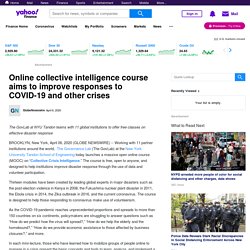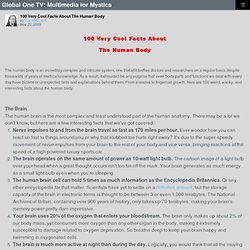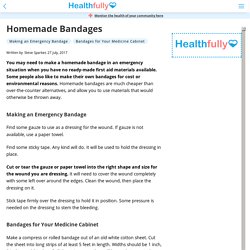

Collective intelligence course aims to improve responses to COVID-19, other crises. The GovLab at NYU Tandon teams with 11 global institutions to offer free classes on effective disaster response BROOKLYN, New York, April 06, 2020 (GLOBE NEWSWIRE) -- Working with 11 partner institutions around the world, The Governance Lab (The GovLab) at the New York University Tandon School of Engineering today launches a massive open online course (MOOC) on “Collective Crisis Intelligence.”

The course is free, open to anyone, and designed to help institutions improve disaster response through the use of data and volunteer participation. Thirteen modules have been created by leading global experts in major disasters such as the post-election violence in Kenya in 2008, the Fukushima nuclear plant disaster in 2011, the Ebola crisis in 2014, the Zika outbreak in 2016, and the current coronavirus. The course is designed to help those responding to coronavirus make use of volunteerism. More information on the courses is available at About the New York University Tandon School of Engineering. The human microbiome: Me, myself, us. WHAT’S a man?

Or, indeed, a woman? Biologically, the answer might seem obvious. A human being is an individual who has grown from a fertilised egg which contained genes from both father and mother. A growing band of biologists, however, think this definition incomplete. They see people not just as individuals, but also as ecosystems. A healthy adult human harbours some 100 trillion bacteria in his gut alone. And it really is a system, for evolution has aligned the interests of host and bugs. That bacteria can cause disease is no revelation. A bug’s life One way to think of the microbiome is as an additional human organ, albeit a rather peculiar one.
The microbiome, too, is organised. Specialised; but not monotonous. That detail is significant. This early nutritional role, moreover, is magnified throughout life. 100 Very Cool Facts About The Human Body. The Brain The human brain is the most complex and least understood part of the human anatomy.

There may be a lot we don’t know, but here are a few interesting facts that we’ve got covered. Nerve impulses to and from the brain travel as fast as 170 miles per hour. Ever wonder how you can react so fast to things around you or why that stubbed toe hurts right away? It’s due to the super-speedy movement of nerve impulses from your brain to the rest of your body and vice versa, bringing reactions at the speed of a high powered luxury sports car.The brain operates on the same amount of power as 10-watt light bulb. Hair and Nails While they’re not a living part of your body, most people spend a good amount of time caring for their hair and nails. Facial hair grows faster than any other hair on the body. The Medical Biochemistry Page. Multiple Symptom Checker & Medical Search Engine. NextGenU.org The world's first portal to free, accredited, health education.
Frontiers in Neuroinformatics. Biomarkers Consortium. Homemade Bandages. You may need to make a homemade bandage in an emergency situation when you have no ready-made first aid materials available.

Some people also like to make their own bandages for cost or environmental reasons. Homemade bandages are much cheaper than over-the-counter alternatives, and allow you to use materials that would otherwise be thrown away. Making an Emergency Bandage Find some gauze to use as a dressing for the wound. If gauze is not available, use a paper towel. How to Make a Roomy Slingback Fit Better Find some sticky tape. Cut or tear the gauze or paper towel into the right shape and size for the wound you are dressing. How to Tape a Hurt Toe Stick tape firmly over the dressing to hold it in position.
Bandages for Your Medicine Cabinet Make a compress or rolled bandage out of an old white cotton sheet. Make a triangular bandage out of any strong cotton material. Cut a variety of widths from the legs of some old stretch jeans to make elastic bandages. Tips Warnings.
ViewPort. The Importance of Quantitative Systemic Thinking in Medicine: Physics and Complexity Science. Medical Topics--Lines of Inquiry. Anatomy Care. Brain Ideas. Evolving. Nutritional. Vitality. BIOLOGICA. Virology 2019. Being Complex. Erudite. Informed Opinions. PSYCHe. Got Meds? Perturbations. Drugs Gone Wild. Restoration.
Artificially Intelligent. Pathways. PSYCHe Labs. SCIENCE Wise. Genomic Insights.